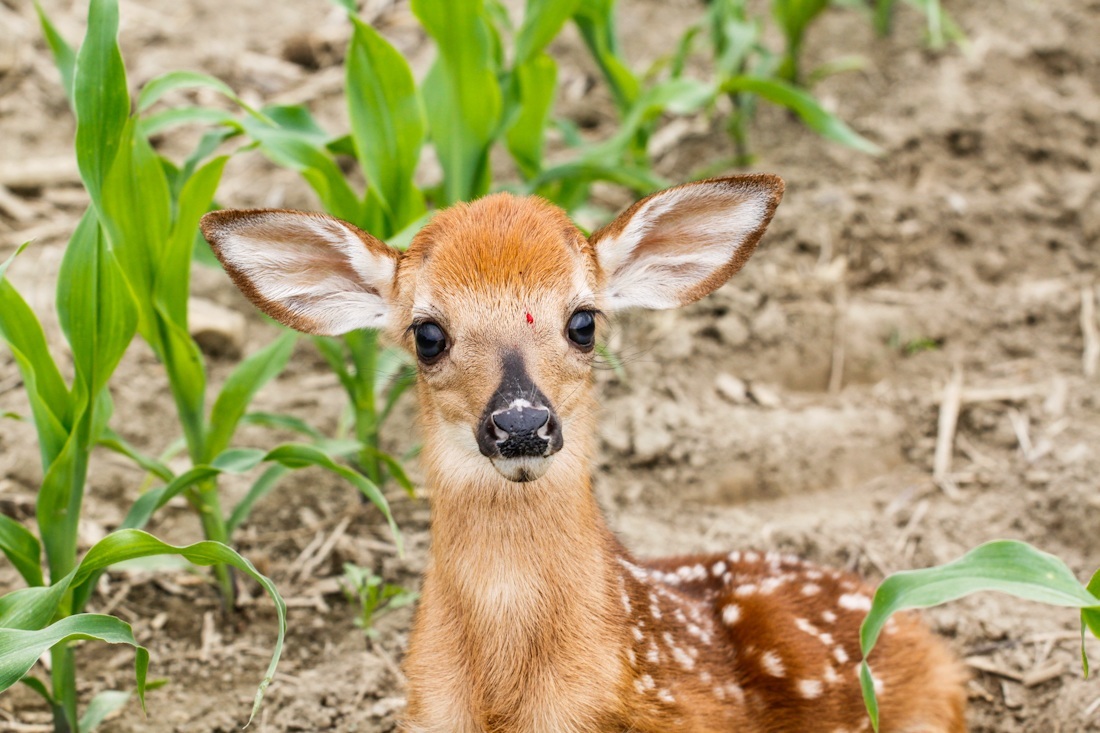The world of the whitetail deer is an intricate and interesting one. Do you know these deer facts?
A North American deer hunter’s world revolves around these amazing animals. From their keen sense of smell to their unpredictable rut activity, the whitetail is a fascinating creature to study.
Whitetail deer live in almost every one of the United States, with home ranges stretching from Texas to Florida to New Jersey to Wyoming. They’re extremely resilient and have found a way to thrive in nearly every habitat and situation they find themselves in.
However, how much do you really know about the whitetail deer? Can you apply some of these facts to your deer hunting strategy?
Let’s find out what sets these creatures apart from the rest of the deer family!
1. Fawns learn quickly.

A deer fawn can stand 20 minutes after birth, walk in an hour, run a bit in 24 hours, and outrun a man in five days.
Young deer are often written off as clueless, but they’re well on their way to becoming a savvy, cunning animal. They need to stay alert and steer clear of mountain lions, bobcats, and other predators.
2. Deer are well-insulated.

The hollow, reddish-brown winter hair of the deer’s coat provides excellent insulation, preventing loss of body heat, while also keeping the snow from melting. This proves especially useful in Canada and the northern United States.
3. Deer eat a lot.

Being an herbivore has its advantages and disadvantages for whitetails. On average, a deer needs to eat about 8 pounds of vegetation, per 100 pounds of body weight, per day.
A 150-pound deer needs to eat 12 pounds of food in a 24-hour period over most of the year. That’s a lot of acorns and grass!
4. Deer sleep even more.

Over most of the year, whitetails remain bedded 60-70 percent of the time, usually feeding five times every 24 hours.
Deer can defecate while bedded, but need to get up to urinate.
5. Deer have the same number of teeth as humans.

Like a human, an adult deer has 32 teeth. The wear on an adult’s teeth throughout their lifespan can indicate how old the deer is.
However, a deer has no upper teeth in the front of its mouth; the space is instead filled with a hard-surfaced pad of gristle.
6. A number of factors influence a deer’s antler growth.

A deer’s antlers are a result of three factors: nutritious food, increasing buck age and good genes.
The shape and configuration of the antlers is strictly genetic.
7. Chin whiskers tell deer exactly how far from the ground their lips are when feeding.

Most of their browsing occurs on the forest floor, so deer have a special mechanism for determining their head’s position in relation to the ground.
8. Buck antlers grow quickly.

Adult buck antlers start to grow around the last of March or early April, and grow at the rate of about a quarter-inch per day.
Younger bucks begin growing their antlers a little later, and theirs grow at a slower rate. Deer populations with strong antler growth and development translates to overall good herd health.
9. Sparring isn’t only a matter of establishing dominance.

Sparring is an activity bucks partake in to test one another for dominance, yes. But it also serves to develop the muscles and skills they’ll need if they should actually have to fight during the breeding season, when female deer on in their crosshairs.
Sparring is also a reaffirmation of the status quo in each fraternal group and prevents actual fights from having to take place, which could cause severe injuries, if not death.
10. Bucks put on miles to pursue does.

During the rutting season, a male deer will lose up to 25 percent of its body weight from the constant seeking and chasing of does during mating season.
Respect North America’s favorite big game animal by knowing some facts about them!
Information compiled from the book “Whitetail Savvy” by Dr. Leonard Lee Rue III.
NEXT: LOCKED UP WHITETAIL BUCKS SAVED BY ILLINOIS CONSERVATION OFFICER ARMED WITH A POLE SAW [VIDEO]
WATCH








